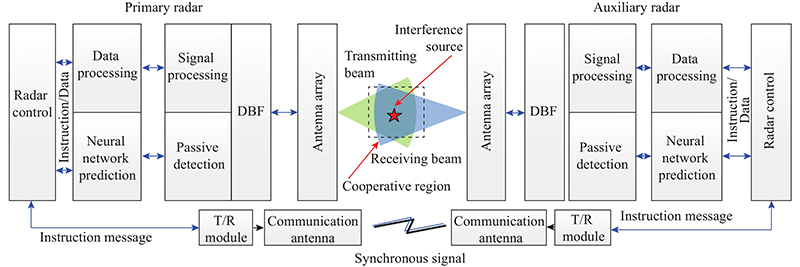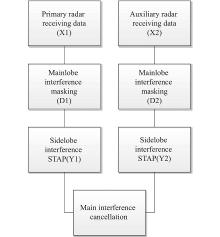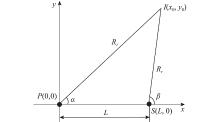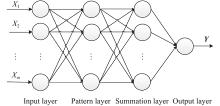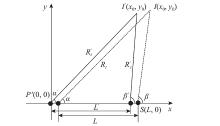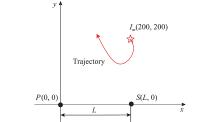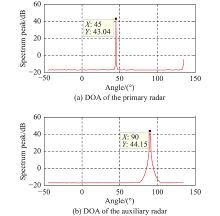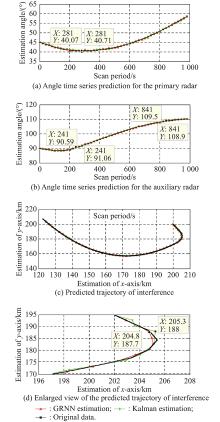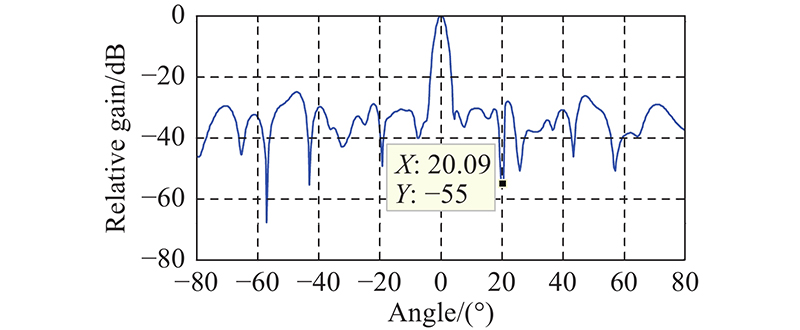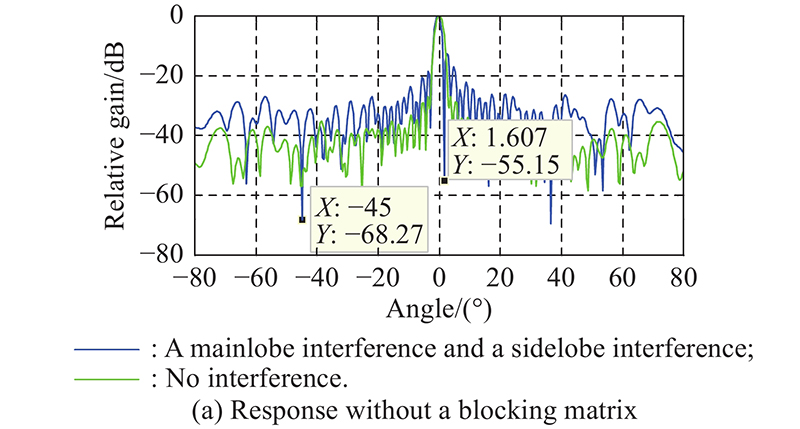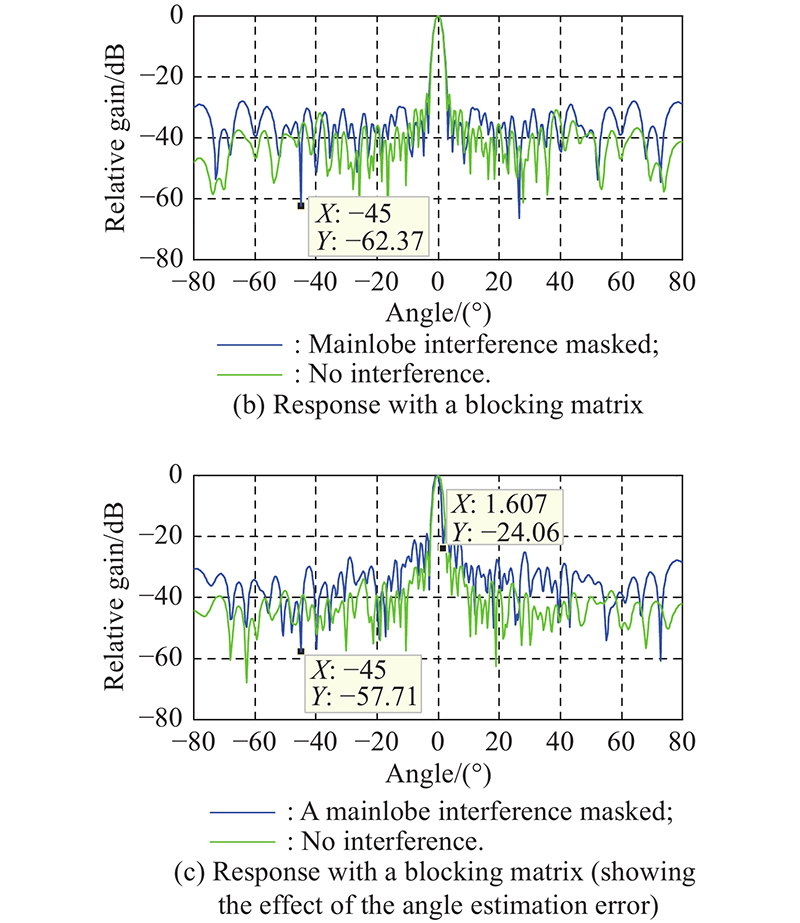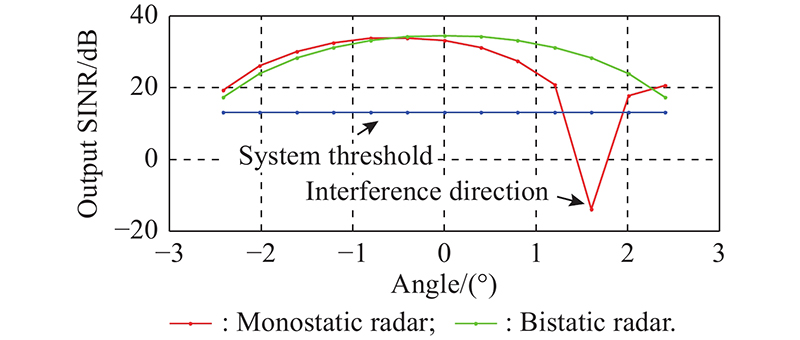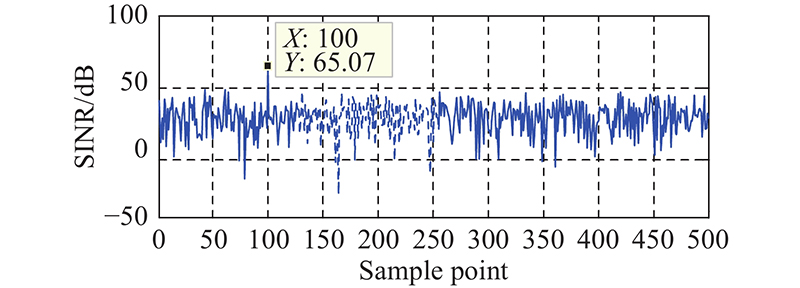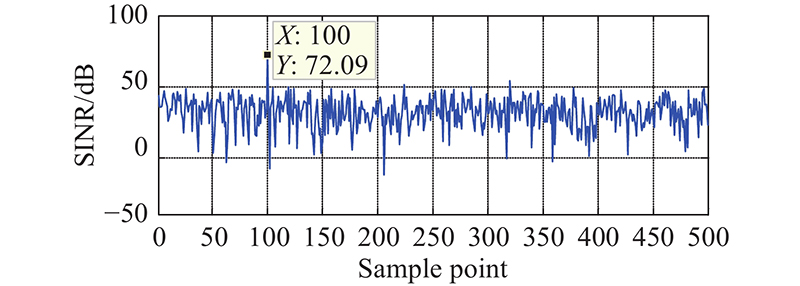| 1 |
KLEMM R Comparison between monostatic and bistatic antenna configuration for STAP. IEEE Trans. on Aerospace and Electronic Systems, 2000, 36 (2): 596- 608.
|
| 2 |
MELVIN W, CALLAHAN M, WICKS M Adaptive cancellation method for geometry induced nonstationary bistatic clutter environments. IEEE Trans. on Aerospace and Electronic Systems, 2007, 43 (2): 651- 672.
doi: 10.1109/TAES.2007.4285360
|
| 3 |
STINCO P. Performance analysis of bistatic radar and optimization methodology in multistatic radar system. Pisa: University of Pisa, 2012.
|
| 4 |
AHMED A A, IOANNIS P, BENOIT C Covariance-free non-homogeneity STAP detector in compound Gaussian clutter based on robust statistics. IET Radar, Sonar and Navigation, 2019, 13 (12): 2107- 2119.
doi: 10.1049/iet-rsn.2019.0201
|
| 5 |
ZHANG W, AN R X, HE N Y, et al Reduced dimension STAP based on sparse recovery in heterogeneous clutter environments. IEEE Trans. on Aerospace and Electronics Systems, 2020, 56 (1): 785- 795.
doi: 10.1109/TAES.2019.2921141
|
| 6 |
HIMED B, ZHANG Y, HAJJARI A STAP with angle-Doppler compensation for bistatic airborne radars. Proc. of the IEEE National Radar Conference, 2002, 311- 317.
|
| 7 |
BORSARI G Mitigating effects on STAP processing caused by an inclined array. Proc. of the IEEE Radar Conference, 1998, 135- 140.
|
| 8 |
VARADARAJAN V, KROLIK J K Joint space-time interpolation for distorted linear and bistatic array geometries. IEEE Trans. on Signal Processing, 2006, 56 (3): 848- 860.
|
| 9 |
HAYWARD S D Adaptive beamforming for rapidly moving arrays. Proc. of the CIE International Conference of Radar, 1996, 480- 483.
|
| 10 |
BLUNT S, GERLACH K, RAMASWAMY M STAP using knowledge-aided covariance estimation and FRACTA algorithm. IEEE Trans. on Aerospace and Electronic Systems, 2006, 42 (3): 1043- 1057.
doi: 10.1109/TAES.2006.248197
|
| 11 |
CAPRARO C Implementing digital terrain data in knowledge-aided space-time adaptive processing. IEEE Trans. on Aerospace and Electronic Systems, 2006, 42 (3): 1080- 1098.
doi: 10.1109/TAES.2006.248199
|
| 12 |
YANG Z C, LI X, WANG H Q, et al On clutter sparsity analysis in space-time adaptive processing airborne radar. IEEE Geoscience Remote Sensing Letters, 2013, 10 (5): 1214- 1218.
doi: 10.1109/LGRS.2012.2236639
|
| 13 |
HAN S D, FAN C Y, HUANG X T A novel STAP based on spectrum-aided reduced-dimension clutter sparse recovery. IEEE Geoscience and Remote Sensing Letters, 2017, 14 (2): 213- 217.
doi: 10.1109/LGRS.2016.2635104
|
| 14 |
SAINI R, CHERNIAKOV M, LEIRE V Direct path interference suppression in bistatic system: DTV based radar. Proc. of the International Radar Conference, 2003, 309- 314.
|
| 15 |
CHERNYAK V S Adaptive mainlobe jamming cancellation and target detection in multistatic radar systems. Proc. of the CIE International Conference of Radar, 1996, 297- 300.
|
| 16 |
ZHOU W G, TAN H Y, LI G, et al Investigation on dual station cancellation of mainlobe jamming suppression technology. Modern Radar, 2018, 40 (7): 83- 86.
|
| 17 |
ZHAO S S, LIU Z W Main-lobe jamming suppression method in multiple-radar system. Journal of University of Electronic Science and Technology of China, 2020, 49 (4): 584- 589.
|
| 18 |
ZHANG X, CUI C Range-spread target detecting for cognitive radar based on track-before-detect. International Journal of Electronics, 2014, 101 (1): 74- 87.
doi: 10.1080/00207217.2013.769187
|
| 19 |
OSMANO M, SFAR I, GHARASALLAH A The application of high-resolution methods for DOA estimation using a linear antenna array. International Journal of Microwave and Wireless Technologies, 2014, 7 (1): 87- 94.
|
| 20 |
KALMAN R E A new approach to linear filtering and prediction problems. Journal of Fluids Engineering, 1960, 82 (1): 35- 45.
|
| 21 |
LI Y, PANG Y, LI Z X, et al An intelligent tracking technology based on Kalman and mean shift algorithm. Proc. of the 2nd International Conference on Computer Modeling and Simulation, 2010, 107- 109.
|
| 22 |
ISLAM B. Comparison of conventional and modern load forecasting techniques based on artificial intelligence and expert systems. International Joural of Computer Science Issues, 2011, 8: 504–513.
|
| 23 |
RAJI M A, ATHAPPILLY K Comparative predictive analysis of neural networks (NNS) nonlinear regression and classification and regression tree (CART) models. Expert Systems with Applications, 2005, 29 (1): 65- 74.
doi: 10.1016/j.eswa.2005.01.006
|
| 24 |
SPECHT D F A general regression neural network. IEEE Trans. on Neural Networks, 1991, 2 (6): 568- 576.
doi: 10.1109/72.97934
|
| 25 |
LEUNG M T, CHEN A S, MANCHA R. Making trading decisions for financial-engineered derivatives: a novel ensemble of neural networks using information content. Intelligent Systems in Accounting, Finance & Management. 2009, 16(4): 257–277.
|
| 26 |
SU B, WANG Y, LI R F, et al Mainlobe interference cancel ling method via block matrix. Systems Engineering and Electronics, 2005, 27 (11): 1830- 1832.
|
| 27 |
GAO Y, XU J, LONG T Performance analysis of anti-jamming method via block matrix. Journal of Signal Processing, 2015, 31 (10): 1361- 1365.
|
 ), Liang ZHANG1,2(
), Liang ZHANG1,2( ), Tao WU2(
), Tao WU2( ), Wenjun HU2(
), Wenjun HU2( )
)

